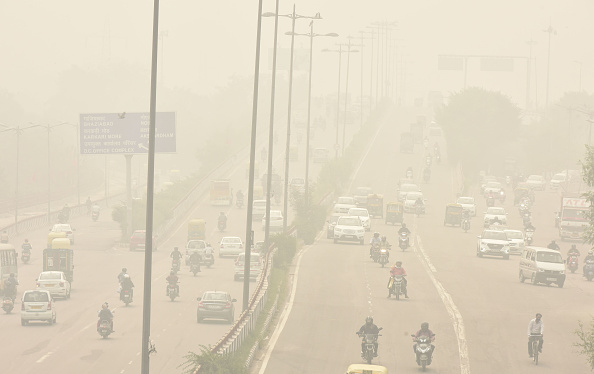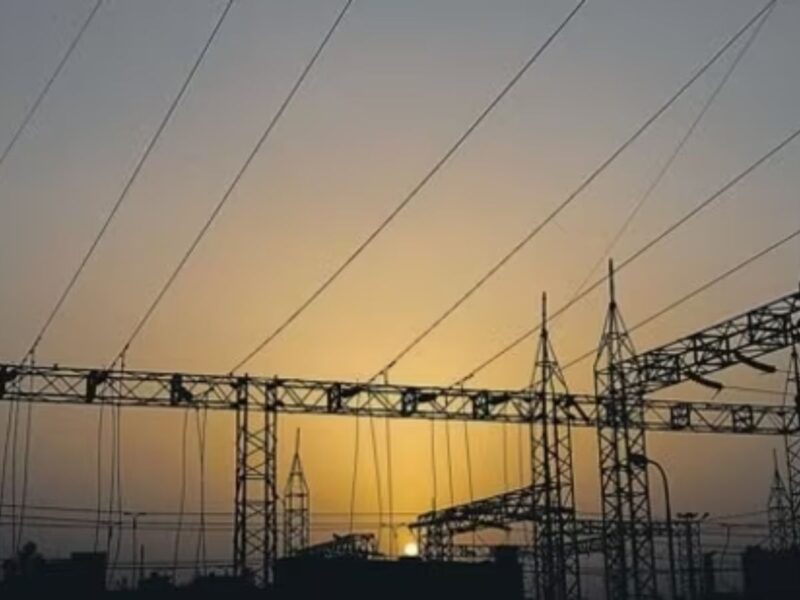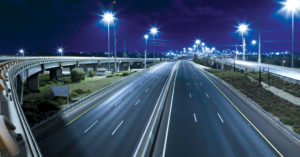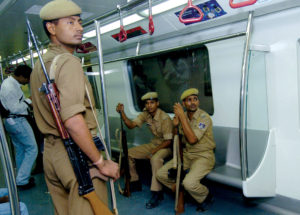The layer of eye-stinging smog lingering over Delhi-NCR thickened on Friday, giving an orange tint to the sun and lowering visibility to 200 metres at several places in the region reeling under hazardous pollution levels since early November
Delhi has recorded severe air quality on five of the last seven days after Diwali. According to an analysis by the Delhi Pollution Control Committee (DPCC), people in the national capital breathe the worst air between November 1 and November 15 every year.
The city recorded the Air Quality Index (AQI) at 454 at 9 am. The 24-hour average AQI was 411 on Thursday. Faridabad (452), Ghaziabad (490), Greater Noida (476), Gurugram (418) and Noida (434) also recorded severe air quality at 9 am.
An AQI between zero and 50 is considered “good”, 51 and 100 “satisfactory”, 101 and 200 “moderate”, 201 and 300 “poor”, 301 and 400 “very poor”, and 401 and 500 “severe”.
According to the Central Pollution Control Board (CPCB), the 24-hour average concentration of lung-damaging fine particles known as PM2.5 in Delhi-NCR stood at 346 micrograms per cubic metre at 9 am, around six times more than the safe limit of 60 micrograms per cubic metre.
The PM10 level was recorded at 544 micrograms per cubic metre.
According to the Graded Response Action Plan (GRAP), the air quality is considered to be in the emergency category if the PM2.5 and PM10 levels continue to be above 300 micrograms per cubic metre and 500 micrograms per cubic metre respectively for 48 hours or more.
Officials from the India Meteorological Department (IMD) said moderate fog and low temperatures in the morning — Delhi recorded a minimum temperature of 12.6 degrees Celsius on Friday — and calm winds have been trapping pollutants close to the ground.
“Visibility levels at the Indira Gandhi International Airport and the Safdarjung Airport dropped to 300-500 metres due to moderate fog. It (fog) has intensified on Friday due to high humidity,” an official said.
Green think tank Centre for Science and Environment (CSE) said the ongoing smog episode is a public health emergency and could be the longest in four years.
The longer duration of this year’s smog, despite relatively windier local conditions, might be due to a lack of pollution control measures in the city, the CSE had said in a report.
In another report, it said vehicles accounted for more than 50% of Delhi’s pollution during the early phase of this year’s winter, from October 24 to November 8.
According to the Ministry of Earth Sciences’ air quality forecasting agency SAFAR, 3,914 farm fires accounted for 26% of Delhi’s PM2.5 pollution on Thursday. Stubble burning has accounted for at least 25% of Delhi’s PM2.5 pollution for eight days on the trot, starting November 4.
The share of farm fires in Delhi’s pollution rose to 48% on Sunday, the highest since November 5, 2018, when it was recorded at 58%.
Last year, the share of stubble burning in Delhi’s pollution had peaked at 42% on November 5. In 2019, crop residue burning accounted for 44% of Delhi’s PM2.5 pollution on November 1.
Delhi Environment Minister Gopal Rai wrote another letter to Union Environment Minister Bhupender Yadav on Thursday, calling for an emergency meeting with all the NCR states to discuss the issue of stubble burning.
Rai also launched a month-long campaign to prevent open burning of waste and biomass in the city in a bid to further cut down pollution from local sources. The second phase of the city government’s anti-dust campaign will get underway on Friday.
(Cover: Fog and smog weather view at Pushta road Shastri Park New Delhi, India. Delhi recorded the 24-hourly air quality index (AQI) at 411. PHOTO: Getty Images)





